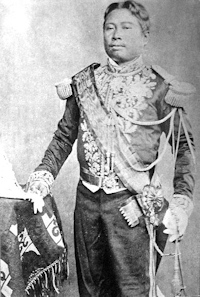Berkeley, Oakland, and Gustine, CA. That same year he led a program to treat poor children in the Oakland-Berkeley area and married Clara Kasky, a graduate of the University of California, Berkeley and a concert pianist. The couple had two children. Dr. Carrington died circa 1927 at the age of 52.
King Noradom was not the only monarch of the era who relied on American dentists. At the turn of the 20th century, American dentistry was way ahead of other dental health systems worldwide. A 1911 New York Times article stated in the mid to late 1800s "dentistry was in a crude state, and Europe was far behind America in its advancement."
Some of the other prominent American dentists who served the world's royalty include Dr. Alonzo Sylvester, the dentist to Kaiser Wilhelm II of Germany; Dr. H.V. Wallison, who serviced Czar Nicholas II of Russia; and Dr. E.W. Thomas, who served Austria-Hungarian Emperor Franz Joseph and was reported to know "the emperor better than any of his ministers."
In Madrid, Dr. Florestan Aguilar, Spanish by birth but educated at the Philadelphia Dental College, serviced the needs of the Spanish court, and Dr. N.S. Jenkins served the kings of both Saxony (a German state) and Savoy (now a region of France).
By far the most famous American dentist to the kings was Dr. John Henry Evans who consulted with King Dom Pedro of Portugal (and Brazil), Czarina Alexandra II, Ottoman Sultan Abdul Hamid, and Pope Pius IX. His most prominent patient was the French Emperor Napoleon III. Dr. Evans was instrumental in assisting the emperor's wife, Empress Eugénie, to escape France when her husband was deposed at the end of the Franco-Prussian war, but his patients were not played by Yule Brynner and Deborah Kerr.
References
Books:
Dow LS. Anna Leonowens: A Life Beyond the King and I. Nova Scotia, Canada: Pottersfield Press; 1991.
Landon M. Anna and the King of Siam. London, U.K.: Trubner & Co.; 1870.
Newspaper/journal articles:
Clad in classic cap and gown. San Francisco Call. June 19, 1896: 18.
College notes: College of Dentistry, University of California. Pacific Dental Gazette, January 1910: 120. Accessed December 4, 2013.
College of Dentistry Announcement for 1910-1911. University of California Bulletin. April 1910; 3(7):41.
Anna Leonowens, the governess to the king of Siam's children, observed that within the king's harem: "nearly all were young ... [and] ... most would be positively attractive but for their ingeniously ugly mode [of] blackening the teeth."
Another painful custom of the time among Cambodians was to shorten teeth. This was accomplished by placing "a small block of wood [which was used] as a bite block." The native dentist then proceeded with a "coarse mechanic's file to shorten the anterior teeth." If the tooth proved to be too hard for the file, a saw would be used "with painful destruction of the soft parts." The entire process took about two hours.
Continued Page 3
Dr. Paul Carrington
and the king's teeth
Continued from Page 1



King Noradom I (1834-1904)
Page 2
Dr. Carrington remained at the palace for two months. When he departed, newspapers reported, the king "wept on the doctor's neck" at a banquet thrown in his honor. He was also given a badge with the king's emblem on it, a gold cigar holder, and was thanked "effusively."
He remained a member of the king's staff and was under contract to travel back to the Cambodian capital "whenever his majesty's teeth began to ache [too much]."
Dr. Carrington returned to the U.S. around 1910 and was appointed curator of the University of California Dental Museum. He also maintained private practices in
E-MAIL ME ddemers901@sonic.net
